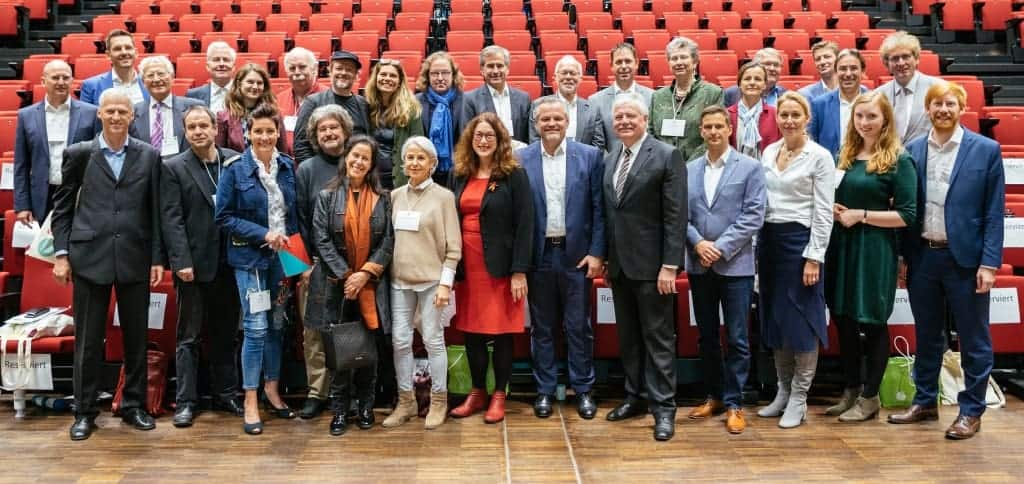
Cradle to Cradle congress 2017 in Lueneburg
Photo: Max Arens
Press release
Stop whining – let’s change the world!
We often remember negative news more clearly than we do positive, as the philosopher and writer Dr. Michael Schmidt-Salomon emphasised during the fourth Cradle to Cradle (C2C) Congress, which took place on October 20 & 21, 2017 at the Leuphana University in Lueneburg (Germany).
However, 800 participants in attendance served as a poignant illustration of the fact that the positive message contained within the C2C design concept is being met with great enthusiasm: we can change the world with a positive footprint and break the mold of classic models of sustainable thinking. “100 years from now, people will be more intelligent. They won’t even realize that production methods without C2C ever existed”, Schmidt-Salomon said. The prospect of a true circular economy that is based on the principles of C2C and that is able to combine environmental protection and the economy took centre stage in numerous real-world examples presented at the international C2C Congress, organized by Cradle to Cradle e.V.
At a time when resources are becoming increasingly scarce, C2C offers an innovation-oriented approach: from the outset products are developed and designed so that their raw materials can be easily recycled back into circuits. Renowned actors from the fields of fashion, plastics, organic farming, printing as well as this year’s spotlight subject, construction and architecture, discussed C2C as a driver of innovation in a variety of formats. It became clear that it takes visionaries and C2C enthusiasts who develop alternative proposals to existing products, production processes and management methods. Erwin Thoma, CEO of wood specialist Thoma Holz, stressed that in order to retain sufficient wood a house must be made into another house once it reaches the end of its useful life. If it was simply demolished and disposed of important raw materials would be lost. The Congress also formulated concrete political demands: for example, the public tender system in the construction sector should be replaced with a model in which the successful bid does not necessarily have to be the cheapest one.
The example of the company Dopper was a reminder that innovation can also be successfully applied in the field of plastics and that holistic solutions are needed. However, in order to achieve comprehensive change politics, the economy and consumers must act in unison.
Tim Janßen, CEO of C2C e.V., drew a very positive conclusion: “The Congress was a great success. The large number of participants as well as international actors such as Dr. Leyla Acaroglu, Lewis Perkins and Ken Webster show that the C2C Congress is being received with great interest and that it is the world’s largest C2C platform.”
Nora Sophie Griefahn, CEO of C2C e.V., also looked back positively on the event and is already looking forward to next year’s Congress: “Thanks to the 800 participants and actors such as Prince Carlos de Bourbon de Parme, Andreas Engelhardt and Dr. Michael Schmidt-Salomon the Congress was filled with life and demonstrated how C2C affects many different sectors of society.”
Info box
Cradle to Cradle
The Cradle to Cradle design concept models itself on the natural world, which knows no waste. Every product can be recycled if it is designed in such a way from the outset. A compostable t-shirt or a desk chair completely built from recyclable raw materials can circulate perpetually in biological and technological cycles. The aim of Cradle to Cradle e.V. is to establish the concept in the public sphere through education, networking and public relations.
 Monika Griefahn GmbH
Monika Griefahn GmbH
Leave a Reply